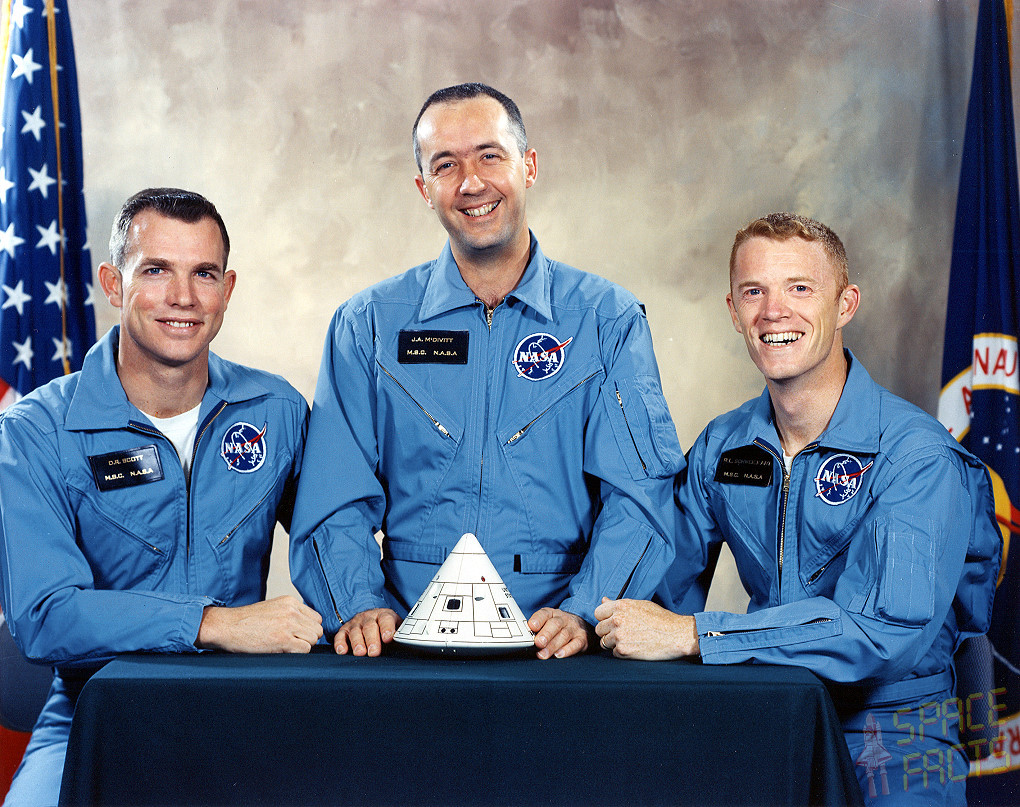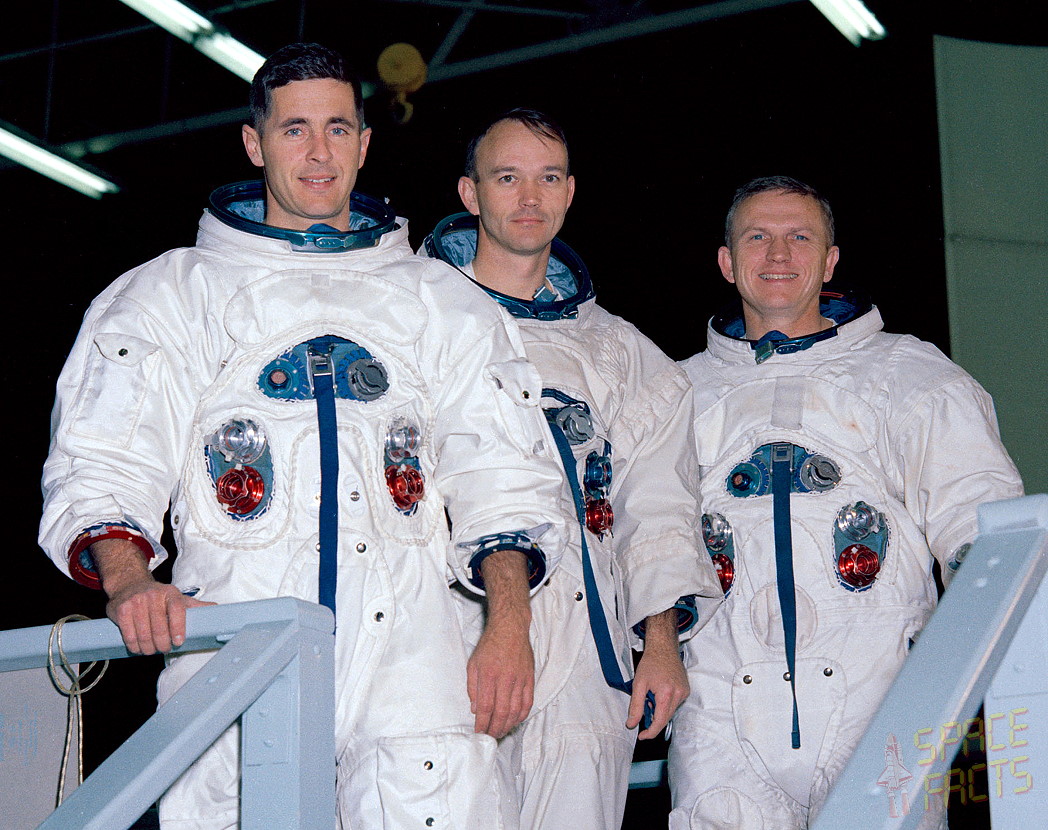On November 20, 1967, NASA announced the crews for the second and third Apollo missions, which would follow Apollo 7, an Earth orbital test of the Command and Service Modules (CSM) scheduled for the fall of 1968. According to the Apollo flight schedule published two weeks previously, the second mission would be the first manned flight of the Saturn 5 Moon rocket in late 1968. The prime crew of Commander James McDivitt, Command Module Pilot (CMP) David Scott and Lunar Module Pilot (LMP) Russell Schweickart would conduct the first manned test of the Lunar Module (LM) in Earth orbit. The backups, Commander Charles Conrad, CMP Richard Gordon and LMP Alan Bean, would be ready to fly the mission in case something happened to the prime crew.
During the third mission planned for early 1969 the prime crew of Commander Frank Borman, CMP Michael Collins and LMP William Anders would simulate in Earth orbit all the steps and sequences of an actual lunar landing. The CSM and LM would fly separately for several hours and the LM descent and ascent stages would be fired as if landing on and launching from the Moon, the firings boosting the spacecraft to an altitude of 4,000 miles. The backup crew consisted of Commander Neil Armstrong, CMP James Lovell and LMP Edwin Aldrin. The astronauts chosen for these challenging and critical missions had extensive experience: most had flown at least one Gemini mission (Conrad and Lovell had flown two each), and the three rookies (Schweickart, Bean and Anders) were highly skilled experts in the LM. Events in the months to come would alter the mission plans and shuffle some of the crew assignments, but all 12 astronauts would play critical roles in the effort to accomplish a lunar landing before the end of the decade.
For more on the Apollo Program, please visit the JSC History Office page at https://www.jsc.nasa.gov/history/apollo.htm






























